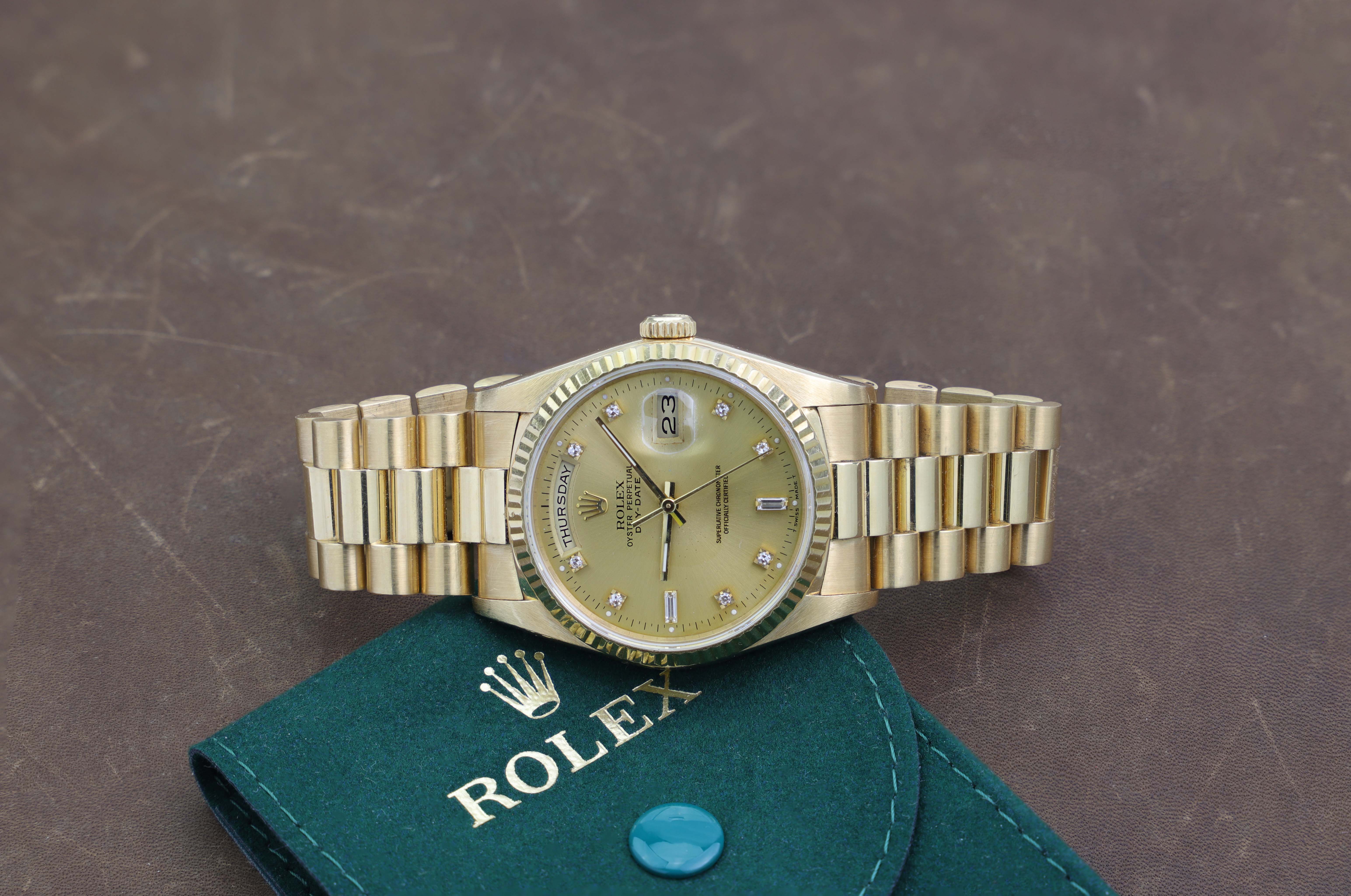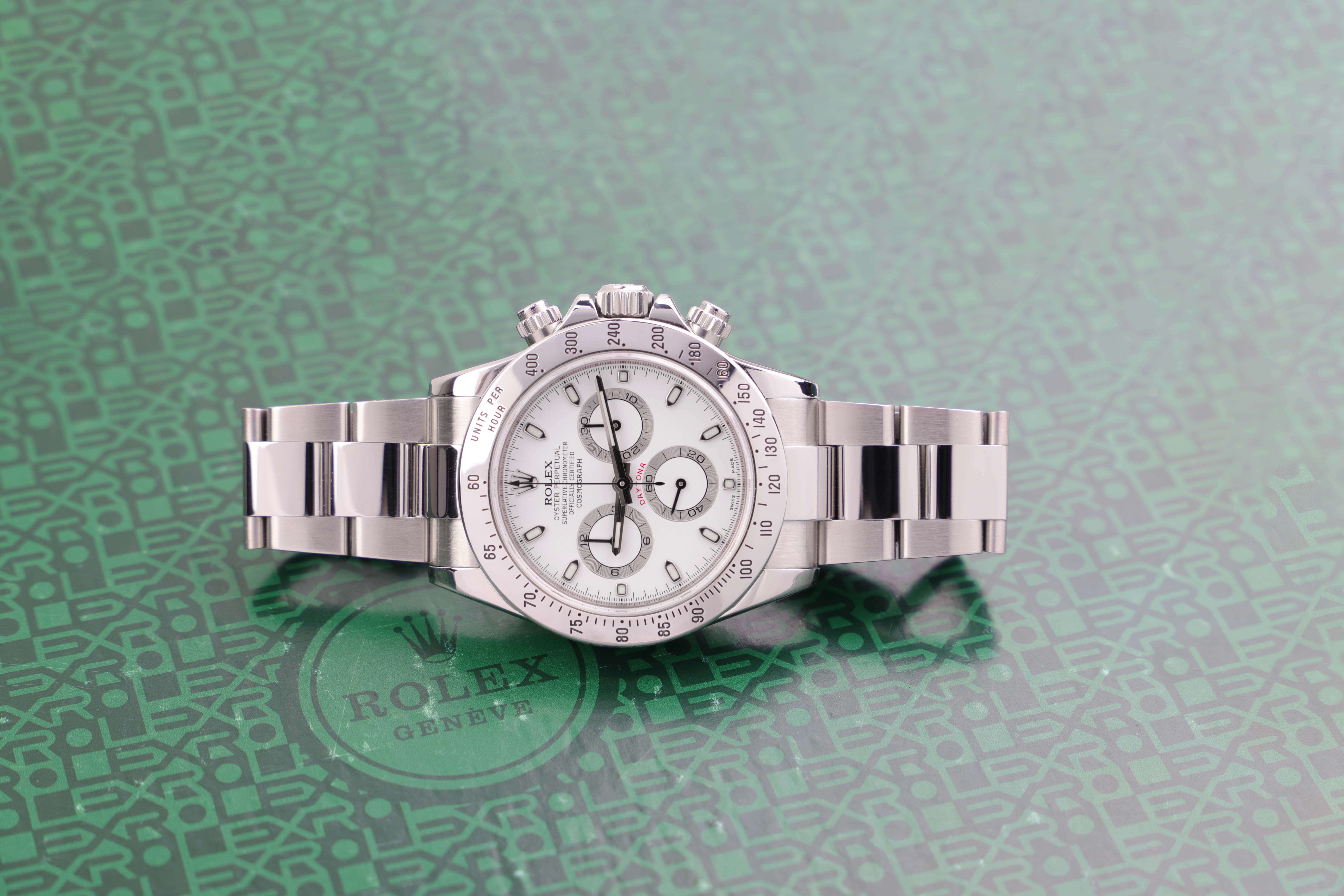
How Often Should you Wind a Rolex? Complete Guide
As you may know, all modern Rolex watches are powered by automatic movements. An automatic movement is a mechanical movement equipped with a rotor that rotates from the movements of the wrist. When it rotates, it winds the mainspring of the watch and thus generates energy for the movement. This is the way automatic movements get their energy, meaning that you don’t have to change batteries or manually wind the watch like you would with a hand-wound manual watch.
But there are occasions when you need to wind your Rolex watch. With that said, how often should you wind a Rolex and when should you?
The short answer is that you should wind your Rolex watch when it has stopped. You may also wind the watch if you take it off and do not plan to wear it for one or two days. Since Rolex watches are automatic, they don’t need to be hand-wound assuming that you wear it regularly. The energy generated from your wrist’s movements will be sufficient to keep it ticking, even overnight.
Automatic movements feature mainsprings that are wound and thus store energy. When you take it off, the watch consumes energy but it doesn’t get any new since the rotor is still. Different Rolex watches have different levels of power reserves. Some Rolex watches have power reserves of 48 hours when fully wound, others have 70 hours when fully wound. A good starting point is therefore to look at your watch’s specifications in regards to its power reserve so you know how long it can last without being wound.

This brings us to the next point.
In Rolex’s own words:
“There is no need to wind a Rolex if it is worn daily. As you move your wrist throughout your day, the Perpetual rotor transfers energy to the watch, providing a constant and stable power source. When you take it off and set it aside it can retain its charge for up to 70 hours, depending on the model. To get it going, simply wind the movement manually by unscrewing the crown to the winding position and turning it clockwise about 20 times. Please remember to screw the crown back down properly against the case in order to guarantee waterproofness.”
Winding your Rolex before taking it off
If you know in advance that you will not wear your watch for some time, it can be good to manually wind it before you take it off. This ensures that it is fully wound and can keep ticking until it is time to wear it again (assuming it’s not too long between). Even if your Rolex is wound when you are wearing it, it’s not certain that your wrist will generate enough movement to fully wind the watch. In this case, manually winding the watch ensures it is fully wound and has the full power reserve to keep ticking.
A lot of people wear their Rolex watch every day and if this is the case, the answer on how often you should wind your watch would essentially be never. If you wear the watch daily, it will have sufficient energy and won’t need to be manually wound.
This avoids the “issue” of having to set the correct time, date, and other functions (if you have them) when you are ready to start wearing it again.

Winding your Rolex when it has stopped
Another situation when you definitely should (and need) to wind your Rolex watch is if it has stopped as a result of running out of energy. Winding your Rolex is the most appropriate way to get it to start ticking again. Some people shake their watch to make the rotate and therefore generate energy for the movement but this is not advised. It causes unnecessary stress to the movement and when you have such a convenient feature built into the watch where you can just wind it via the crown, there’s no point in shaking it.
If your watch has stopped, you want to wind it using the crown, partially to get it to start, but also partially to fully charge it so that it doesn’t stop immediately after just because your wrist didn’t move enough. Fully winding the watch ensures that it is ready to go and has sufficient energy, even if you, for example, take off the watch in the evening. Otherwise, the risk is that the watch will have very little energy and stop during the night.

Can you Overwind a Rolex?
You can not overwind modern Rolex watches. Modern Rolex watches have automatic movements that are built to “disconnect” from the winding mechanism to keep the mainspring from breaking as a result of being overwound.
Some older Rolex watches, on the other hand, do not have this mechanism and may therefore be overwound and break.
In this case, the answer to the question of how often you should wind your Rolex depends on how frequently it stops.
Winding your Rolex to keep the watch in good order
It can also be good to manually wind your Rolex occasionally to keep the movements in good working order and to ensure that the lubricants for the winding mechanism do not dry out and are evenly distributed.
You don’t have to do this frequently but do it occasionally, for example, once a month or even a few times a year. This is perhaps most important if you have let your watch sit in a safe for a long time. If you let the watch sit for a long time without running, it can, over time, make the oils dry out, and make the movement lose its performance. So even if you have a Rolex watch that you are not wearing, make it a habit to wind it now and then.

How to wind a Rolex watch
If you want to wind your Rolex watch for any of the reasons discussed above but are not sure how to do it, don’t worry. Manually winding your Rolex is very simple:
- Unscrew the crown by screwing it in a counterclockwise direction
- You will notice a “click” as the crown jumps out from the threads. Do not pull out the crown.
- Now, screw the crown clockwise. You will notice some resistance and both feel and hear that the watch is being wound. The resistance will increase as the movement is being wound.
- Screw approximately 30-40 turns to fully wind the watch.
- Proceed to set the time and any other functions the watch may have (such as a date) by pulling the crown out one step. As you do this, you’ll hear a click. Note that models with additional functions may have different positions that you can pull the crown to. For example position 1 (winding, position 2 (setting the date), and position 3 (setting the time).
- Push the crown against the case at the same time as you are screwing clockwise. This will allow the crown to grip the threads and be screwed back against the case. This is important to ensure the water resistance of your timepiece.





I have an Rolex Explorer II. This information was very helpful to me in understanding the proper use and care of the watch.
Rolex are the best.
I also have an very old Rolex Submariner that has never been serviced and still works.
Believe I purchased it in the early seventies for $900.00.
I’am sure it may be worth some money now?
Thank you for your comment and glad to hear you found it helpful!
Yes absolutely! The Submariner is one of the most popular Rolex models. It’s hard to know which exact model you have without knowing the reference number but if you say it is very old, the price can vary from $10k upwards of $40k depending on the exact model, configuration, and if you have original box and certificate. If you say 1970s, it could be reference 5512, 5513, or 1680. If so, the value should be somewhere between $9000 and $30000 depending on the factors mentioned above. Congratulations on two stunning and iconic timepieces!
Kind regards,
Millenary Watches